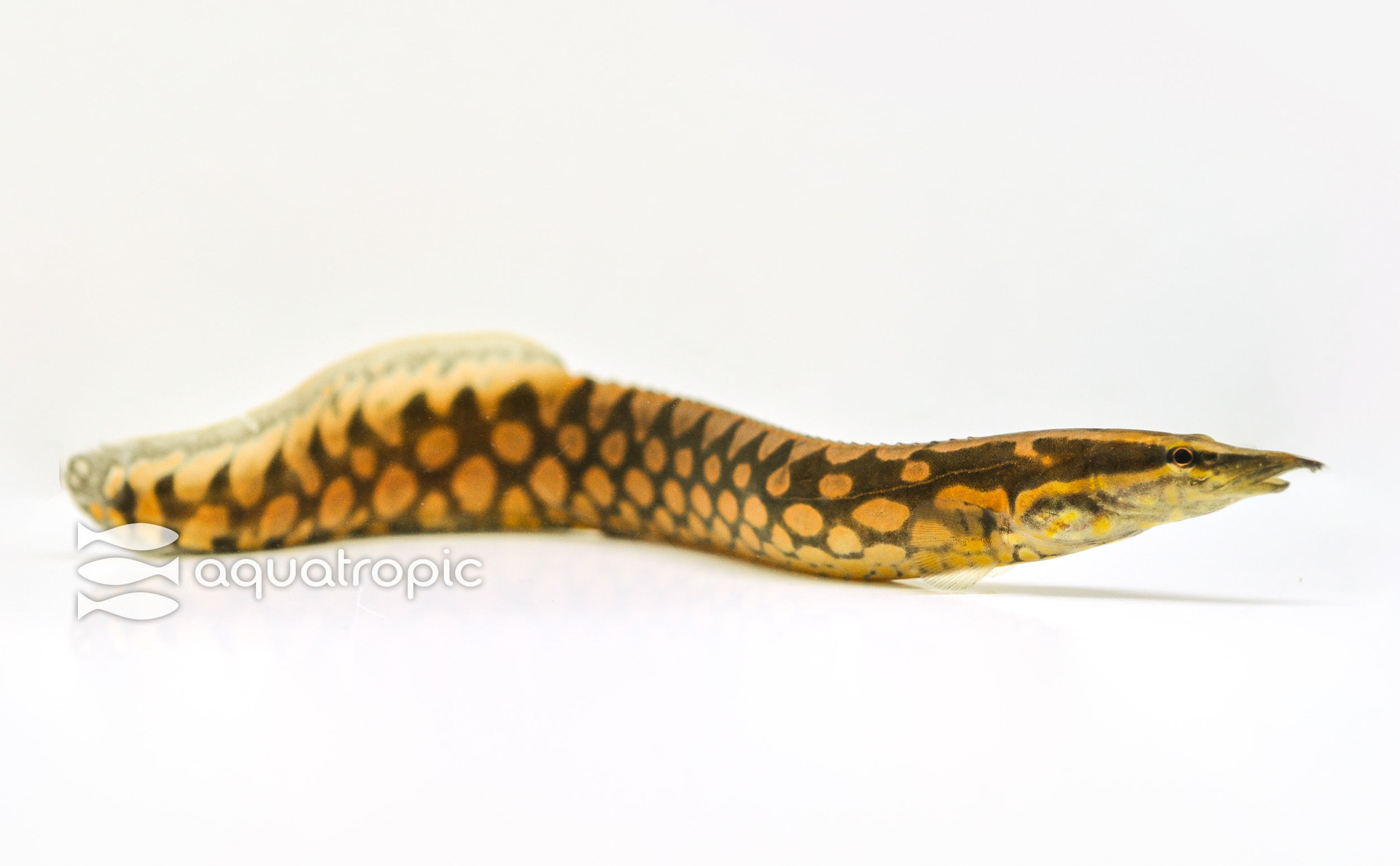Tire Tracks - Mastacembelus armatus

Mastacembelus armatus is commonly known as the Tire Track Eel (or Tyre, for those inclined to using the UK spelling for things). They have many names, as they have a very wide natural range. They can be found in highland streams in Pakistan and China as well as lowland coastal marshes in India, Sumatra and Indonesia and a variety of habitats in between. Other common names around the world include Zig-Zag Eel, White Spotted Eel, Spiny Eel, and Marbled Eel.
In the wild, these eels are usually near the bottom, rarely leaving there even to hunt. At night they forage for insects, larvae, worms and plant material. Gut assays of small wild specimens showed that 20% of their diet was insect (both terrestrial and aquatic), 30% was phytoplankton and the remaining portion (50%) was fish. Their captive diet should emulate this with a good variety of frozen and live fish as well as some vegetable matter. Tank mates should be large enough not to be “mistaken” as food fish.
They are most commonly harvested as food fish, though wild juveniles are also commonplace in the aquarium trade, and are regionally important economically as a result. There is infrequent availability of aquacultured specimens of this species as of yet, because of very limited success breeding them in research facilities. In August of 2020, the International Union for the Conservation of Nature (IUCN) listed the Mastacembelus armatus as a “species of least concern” with current rates of harvest leaving a very stable wild population.
In the wild, these fish can occasionally get as big as 3 feet long, though 18 to 24” is a much more reasonable estimate of full size in an aquarium, which is still a sizable fish. For this reason, Tire Track Eels should have an aquarium of 100 gallons or more at grow out, with an emphasis on footprint over height. A nocturnal species, all Mastacembelus eels will appreciate densely planted habitats, or at least tanks with many hiding places and dim lighting. The TTE likes sand as they will bury themselves in it frequently. All displays should have a tight fitting lid to prevent the eels from escaping, which they will do, out of the tiniest holes. Standard tropical water chemistry applies here, 78-82 degrees F, neutral pH, and some report good success with mildly brackish water.
Tire Track Eels are actually very peaceful fish and can be kept in community type aquariums as long as the tankmates are large. They can be aggressive with other Mastacembelus eels, so they should probably be the only eel in the aquarium. There are reports of keeping groups of several individuals, and this does work very well in the short term, but we do not suggest this for long term husbandry. TTE make great aquarium inhabitants; hardy and exceptionally cool. Given an appropriate display for their lifestyle, you can enjoy this unique fish for years to come.
https://www.fishbase.de/summary/10140
http://pubs.sciepub.com/ajfst/1/4/4/index.html
https://www.sciencedirect.com/science/article/pii/S2305050013601451